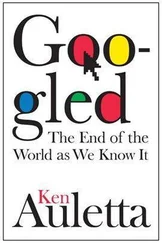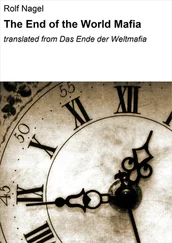“It was shepherds such as you that the Evangelist had in mind,” he writes in the Inferno, addressing the pope at Avignon, “when she that sitteth upon the waters was seen by him committing fornication with the kings.” 76
Dante also follows the example of Revelation by ornamenting his text with a mystical number code and challenging his readers to discern the historical figure whom it is meant to signify: “For I see surely…stars already close at hand…that shall bring us a time wherein a Five Hundred, Ten, and Five, sent by God,” writes Dante in Purgatorio, “shall slay the thievish woman [and] that giant who sins with her.” The alphanumeric code is understood by scholars to represent the numerical value of the letters in the name of Henry VII of Luxembourg, a now-obscure monarch who was Dante’s own candidate for the role of the Last World Emperor as predicted by the Tiburtine Sibyl. 77
Dante, of course, offers only one example of how Revelation served as a kind of lending library of stock scenes and characters, shorthand words and phrases, mystical codes and ciphers, and various other apparatus. By the time he set his hand to The Divine Comedy in the early fourteenth century, the reimagining and repurposing of the original text of Revelation was already an old if not always honorable tradition, and not only among pious theologians and self-styled seers.
Indeed, the author of Revelation, who envisioned the terrors and marvels of the near future, surely could not have imagined what would become of the words he spoke aloud to a little congregation of Christians in the provincial backwater of Roman Empire so many centuries before. Once set into motion in the Middle Ages, however, the enterprise of recycling the book of Revelation for new, startling, and sometimes reckless purposes turned into an engine of art, politics, and propaganda that is still running in high gear today.
Yet it was the author of Revelation who assured the longevity of his little book by offering an all-purpose arsenal of excoriation by which one’s adversaries could be readily, thoroughly, and colorfully abused. The powerful inner logic of Revelation—and whole of the apocalyptic tradition—abandons all effort at persuasion, erases all ambiguities and uncertainties, and threatens the gravest punishment for even the slightest deviation or difference of opinion. By the lights of Revelation, a human being is either right or wrong, good or evil, godly or satanic. And, in the world according to the Apocalypse, anyone who disagrees with the author in the slightest degree is worthy of one or more of the convenient labels that the text provides in abundance: the Beast, the Great Whore, Satan and the Devil, among many others.
Some readers of Revelation were slower than others in realizing how useful Revelation could be in a culture war or, for that matter, a shooting war. Like Joachim of Fiore and Hildegard of Bingen, Martin Luther (1483–1546) was appalled by what he saw as the corruption of the Roman papacy. By 1517, when Luther famously nailed his defiant writings on the door of the Castle Church in Wittenberg, he was ready to break with Roman Catholic dogma and, soon enough, the church itself. But Luther—a monk in the order of St. Augustine—also distanced himself from the book of Revelation.
“There is one sufficient reason for the small esteem in which I hold it,” writes Luther in 1522, “that Christ is neither taught in it nor recognized.” 78
Eight years passed before Luther figured out how to deploy the book of Revelation as a rhetorical weapon in his own war against the Roman Catholic Church—and so “the Reformer performed a volte-face .” 79Luther, like the author of Revelation, saw his enemies as not merely wrongheaded but purely evil and even diabolical, and he gave himself permission to draw on its ideas and imagery in his own sermons, tracts, and missives. “[I]t is meant as a revelation of what is to come,” Luther now writes of the Apocalypse, “and especially of coming tribulations and disasters for the Church.” No longer quite so troubled by the absence of Christ in its text, Luther declares that the satanic beast whose coming is predicted in the book of Revelation is the papacy itself. 80
“[T]he true Antichrist…is reigning in the Roman Curia,” proposes Luther. “I do not know whether the pope himself be Antichrist or his apostle, so miserably is Christ (i.e., the Truth) corrupted and crucified by him.” 81
The author of Revelation may have radicalized the language of abuse, but Luther found new and ever more outrageous ways of using Revelation as a cudgel against his adversaries. Luther, for example, is only following the example of earlier reformers when he characterizes the papacy as the “Babylonian Captivity” of the church and Rome as “Babylon, Mother of Whores.” But he plays with the metaphor in genuinely shocking ways: “We too were formerly stuck in the behind of this hellish whore, this new church of the pope,” Luther rails in one of his notoriously scatological tracts. “We supported it in all earnestness, so that we regret having spent so much time and energy in that vile hole. But God be thanked that he rescued us from the scarlet whore.” 82
Not every Protestant reformer was equally enamored with Revelation, and a few of them were as alarmed as the earliest church fathers had been by its potent and provocative imagery. Across the Rhine in Switzerland, for example, Ulrich Zwingli (1484–1531) and John Calvin (1509–1564) restricted the use of the inflammatory text “in order not to awaken visionary demons.” 83A synod in Saumur, a center of Protestant activism in western France, issued a decree in 1596 that flatly prohibited making any comment on the book of Revelation without formal approval from the church authorities. But Revelation turned out to be so useful and so compelling to the Protestant cause that literally hundreds of new commentaries were composed and published in the century following Luther’s declaration of war on the Roman Catholic Church, and Revelation soon established itself as the “text of choice” for Protestant doomsayers down through the ages.
Protestant preachers, in fact, were even more readily convinced than their Catholic counterparts that they knew when the world would end—and, of course, they were just as wrong. Michael Stifel, a German mathematician, mounted the pulpit in Luther’s church to announce his calculation that the end-times would begin promptly at 8:00 AM on October 19, 1533. More than two hundred years later, undiscouraged by any of the earlier failed prophecies, an English preacher named George Bell declared with equal certainty that Jesus Christ would descend from heaven to earth on February 28, 1763. On the night of the promised Second Coming, John Wesley, the founder of Methodism, preached all night long in an effort to calm the agitated crowds and prepare them for the disappointment of what he correctly presumed would be the dawning of yet another unremarkable day.
The apocalyptic tradition embraces two very different approaches to the proper conduct of pious men and women in times of tribulation. The book of Daniel, as we have seen, teaches the “wise ones” to suffer in silence until God is ready to revenge himself on their oppressors—but The Animal Apocalypse praises the true believers who pick up the sword and go to war. Significantly, the book of Revelation, for all of its rhetorical fireworks, actually sides with Daniel. As John sees it, the suffering saints are meant to wait patiently for their martyrdom and look forward to the happy day when the Word of God, “clothed with a vesture dipped in blood” and bearing a sword in its mouth, 84will return to wreak a bloody vengeance.
Not every of reader of Revelation in the medieval world, however, was able to check the powerful emotions that were stirred up by the words and images to be found in the last book of the Bible. A longing for the endtimes—and a willingness to hasten them along—burned hotly among “the underprivileged, the oppressed, the disoriented, and the unbalanced,” as Norman Cohn puts it, all of whom populated what he calls “the obscure underworld of popular religion.” 85Not a few of them, like the sword-wielding lambs in The Animal Apocalypse, were inspired to take matters into their own hands. Indeed, that’s exactly why Revelation has always been regarded as a dangerous text by the more sober clerics, early and late.
Читать дальше










